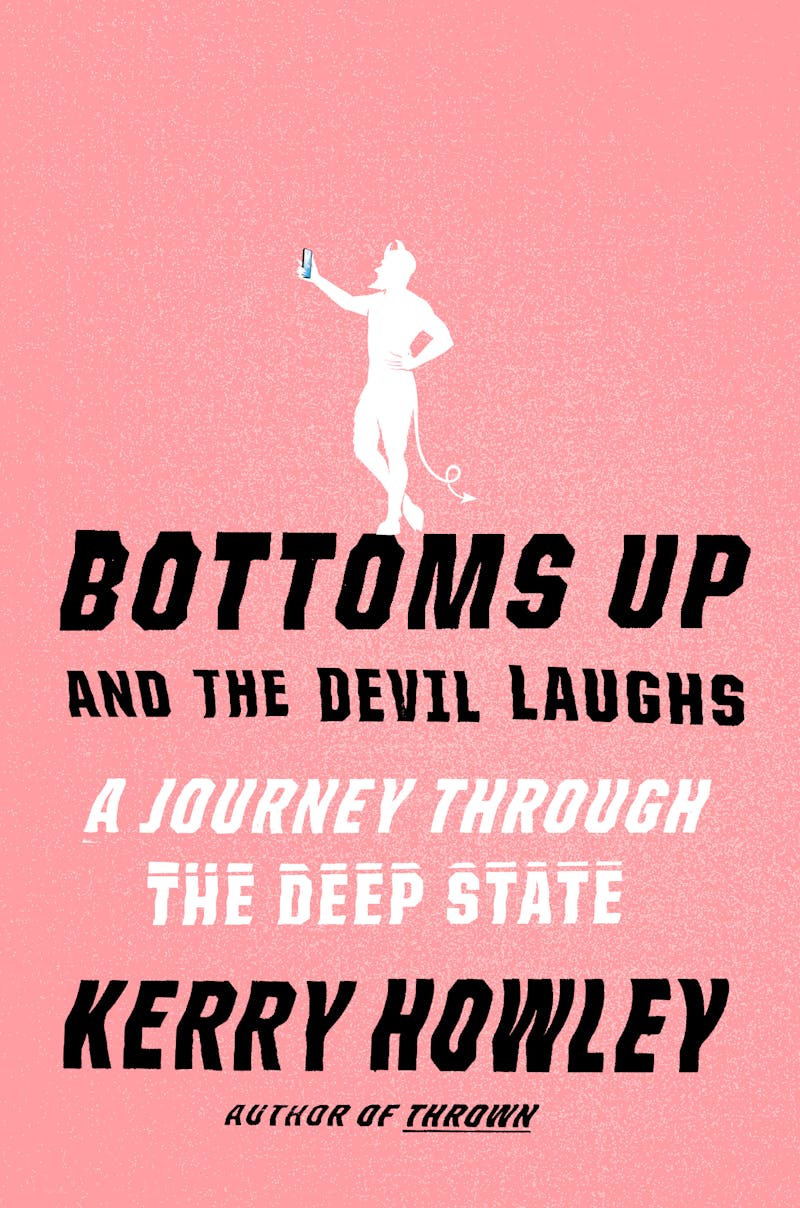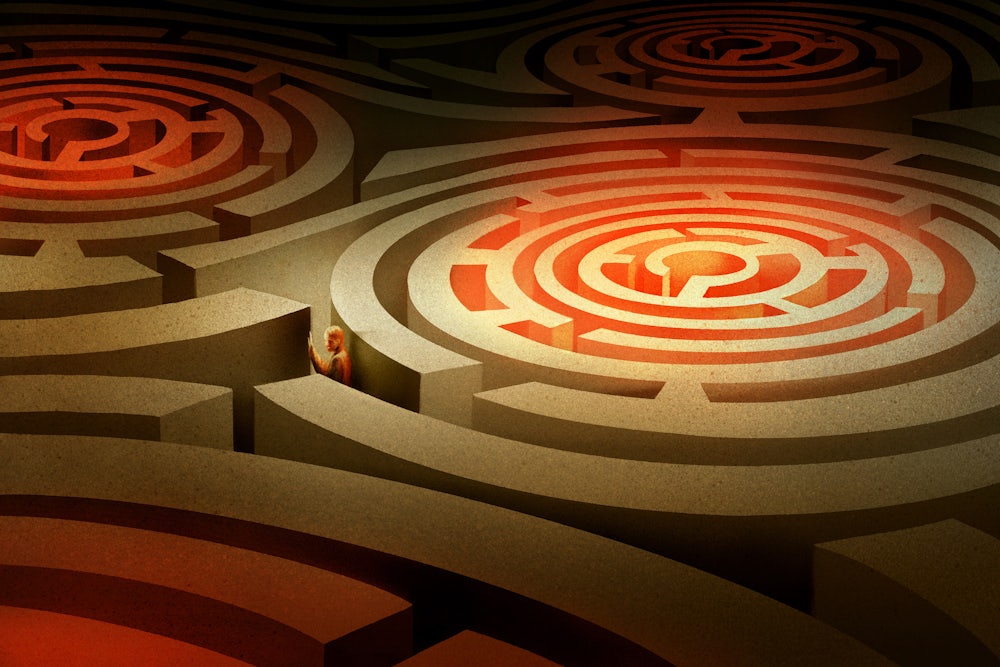In December 2007, ABC News aired an interview between reporter Brian Ross and former CIA officer John Kiriakou. At the time, the United States officially denied running anything like a formal torture program. Kiriakou was the first agent to acknowledge it—but only to defend it.
During their fireside chat, he described the 2002 raid in Pakistan that ended in the arrest of Abu Zubaydah, who was believed to be a high-ranking Al Qaeda official. Zubaydah was shot multiple times but survived. In Kiriakou’s telling, Zubaydah was a “financier” of the 9/11 attacks, a “logistics chief” with a close relationship to Osama bin Laden. In U.S. custody, Zubaydah was waterboarded, which Kiriakou thought was distasteful but necessary at the time. Afraid of impending attacks, the United States had indeed tortured its enemies. It was effective, he claimed. Zubaydah cracked after one waterboarding session and then provided a stream of useful intelligence, disrupting “maybe dozens of attacks.”

Much of what Kiriakou said wasn’t true. It would later emerge that Zubaydah was waterboarded at least 83 times. (“I think honestly that the Agency has gotten a bum rap on waterboarding,” Kiriakou later told MSNBC.) Zubaydah was subjected to a number of other torture techniques, and at some point he lost an eye, though exactly how has never been explained. He never provided useful information to his interrogators. His lawyers have claimed he wasn’t a member of Al Qaeda or much of a militant at all. He remains imprisoned in Guantánamo Bay, where he suffers extensive physical and psychological trauma. The first victim of the CIA’s post-9/11 torture program, Zubaydah is a forever prisoner, living evidence of war crimes that can never be officially made public.
Kiriakou’s interview is “not just propaganda; it is torture fan fiction,” writes Kerry Howley in her new book, Bottoms Up and the Devil Laughs: A Journey Through the Deep State. Describing torture as necessary and heroic, Kiriakou offered a fairy tale, she says, indulging in some of the darkest fantasies of the terror years. He described Zubaydah as a master terrorist, of the kind who seemed to lurk in every dark corner during the Bush administration, when he was nothing of the sort. In Howley’s telling, some of the foundational myths of the war on terrorism years—the classified fictions that helped the security state grow into an all-seeing monstrosity—were just that: myths.
As Howley shows throughout her book, the vast stores of data collected on practically everyone alive now make this kind of mythmaking easier than ever. “Collect it all” is a semiofficial intelligence community motto; and from the resulting heaps of information, details can always be carefully adapted to fit a narrative. Bottoms Up is a sophisticated, artful tour through the dark recesses of this machine and a sympathetic reconsideration of the figures who have fallen afoul of it. Howley’s subjects range from leakers—including Edward Snowden, Chelsea Manning, Julian Assange, and Reality Winner—to wayward militants in foreign lands. As public figures, all are misunderstood—certainly by the U.S. government.
Calling the book “a polemic against memory,” Howley argues that the surveillance state is not so much a record of objective reality—stored in some of the world’s largest, most secure data centers—but an effort to shape and manipulate it. Surveillance may seem omniscient, but it’s selected, interpreted, and deployed to tell specific stories—or specific lies. It’s this ability to shape narratives, both in court and in the media, that has turned civic-minded leakers like Reality Winner into public enemies who betrayed their patriotic oaths.
Chief among the misunderstood might be John Walker Lindh, the so-called American Taliban who emerged as a villainous symbol early after the U.S. invasion of Afghanistan. In many ways, he went through the same propagandistic mill that turned the stories of Jessica Lynch, a soldier taken prisoner in Iraq, and Pat Tillman, who was killed by “friendly fire” in Afghanistan, into emblems of U.S. derring-do and patriotic sacrifice, respectively. And as with Lynch and Tillman, Howley shows, the truth was almost nothing like what was widely reported at the time.
Howley positions Lindh as a hapless figure whom the security machine fixated on and recast as a serious threat. An alienated kid from suburban California, Lindh converted to Sunni Islam at 16, and when he was 17, he set out to find his place in the world, traveling to Yemen to study Arabic. Lindh became a religious zealot, traversing the Middle East, Pakistan, and Afghanistan, looking for communities that lived up to his idealized vision of an austere Islam. He ended up in Afghanistan, where he joined the Taliban, was given a gun, and was sent to a remote mountain outpost.
Lindh had no involvement in the 9/11 attacks. Osama bin Laden once visited a camp where Lindh was staying with many other Talibs, but Lindh had no relationship with the Al Qaeda leader. Until the U.S. decided to invade Afghanistan for hosting Al Qaeda, Lindh was barely a foot soldier in a conflict that was entirely regional. (The Taliban’s main enemy was a mostly Afghan group called the Northern Alliance, whose leader, Ahmad Shah Massoud, was assassinated on September 9, 2001.)
CIA paramilitaries and their Northern Alliance allies captured Lindh as part of a large group of Taliban detainees. They were imprisoned at Qala-i-Jangi, a nineteenth-century fortress, in fetid conditions. When the prisoners revolted, Johnny Michael Spann, a CIA officer, was killed, becoming the first American casualty of the war. Hundreds of prisoners died—shot, burned, or left to drown in a flooded portion of the prison. Lindh survived, and, when his story was reported on CNN, he became an instant media sensation, a diabolical traitor who had gone to the other side and, in the words of Attorney General John Ashcroft, “chose to be led by Osama bin Laden.” On December 17, 2001, Newsweek published a cover story featuring a photo of a dirt-covered Lindh. It was titled “American Taliban: The Saga of John Walker.”
Lindh should have been considered politically irrelevant. Instead, the Bush administration tried to turn him into a terrorist caricature. Donald Rumsfeld told interrogators to “take the gloves off,” and Lindh was stripped naked and bound as part of a set of tactics that foreshadowed future acts of U.S. torture at Abu Ghraib, Guantánamo Bay, Bagram, and black sites around the world. The government charged him with a raft of crimes that could have sent him to prison for life. (Jesselyn Radack, a Justice Department lawyer, became a whistleblower when she revealed that important information was withheld from Lindh’s defense team.) Lindh eventually agreed to plead guilty to reduced charges, receiving a 20-year sentence.
Pick at the stories and legends built up over the long years of the global war on terrorism, and their utter falsity eventually comes to the fore. We are not just subjected to propaganda, Howley seems to say; we are fed fictions, continually. “Surveillance finds truths, and surveillance serves the creation of elaborate untruths,” Howley writes. The former are cultivated in service of the latter—that is, in the service of state power, which relies on fresh narratives about frightening national security threats that require extraordinary countermeasures. That’s what 9/11 gave the U.S. security establishment. In the process, whistleblowers became traitors and torture-practicing intelligence officers became experts on the rough necessity of stress positions and waterboarding.
In this world, the illusion of accountability is one of the more powerful fictions wielded by the state. The august formalities of legal memos, official investigations, criminal prosecutions, oversight panels, and the reports of inspectors general only serve to support the maintenance of the status quo. It was in this kabuki theater of responsible governance where John Kiriakou—where everyone in this book, really—found how easy it was to cross the line between useful functionary and criminal defendant.
In 2012, Kiriakou, the former CIA officer who told Brian Ross—and America—about the U.S. torture program, was arrested for disclosing classified information without authorization. But it wasn’t for anything he said in the 2007 ABC interview. His crime was that he revealed the name of a covert CIA officer to another journalist, Matthew Cole, in violation of the Intelligence Identities Protection Act. Kiriakou presented himself as a whistleblower, who acted out of concern about government behavior in the war on terrorism, but it didn’t get him far. Facing the dismal odds of beating a federal indictment, he pleaded guilty and was sentenced to two and a half years in prison.
In the years since, Kiriakou has written and lectured widely, blasting U.S. behavior in the war on terrorism. For critics of U.S. foreign policy, he has become a symbol of darkly ironic, misplaced accountability: The only person jailed for their part in CIA torture was someone who revealed details of it. What many of them don’t say, or don’t know, is that Kiriakou wasn’t opposed to Zubaydah’s torture at the time, that he thought it was effective, and that he misrepresented it in his famous ABC interview. He didn’t fully earn the mantle of whistleblower until he went to jail for something else. (Kiriakou has written that his eventual prosecution was blowback for that original ABC interview.)
Whistleblowers and security-state dissidents are a rare breed, forming their own small community. It’s a complex world, justifiably tinged with paranoia, where trust is difficult to earn and harder to maintain. America’s whistleblowers often consult one another, work with the same lawyers and NGOs, and sometimes find their stories told by the same journalists. Matthew Cole, the reporter to whom Kiriakou disclosed the name of a covert officer, went on to work for The Intercept, the outlet funded by billionaire Pierre Omidyar to report on the Snowden revelations. Cole was joined by his colleague Richard Esposito, who helped produce Brian Ross’s 2007 interview with Kiriakou. In June 2017, Cole, Esposito, and two other reporters co-bylined an article that revealed Russian attempts to hack U.S. election infrastructure before the 2016 presidential election. Based on a leaked National Security Agency document that someone had printed and anonymously mailed to The Intercept, the article depicted a Russian effort to gain access to election-software providers. The top-secret report, which had only been drafted a month earlier, was described in the article as “the most detailed U.S. government account of Russian interference in the election that has yet come to light.”
The Intercept article was a bombshell but a muted one, because its source, Reality Winner, an Air Force veteran then working as a contract linguist at an NSA facility in Georgia, was already in jail.
The Winner case was potentially straightforward, concerned with a single classified document mailed to a journalistic outlet. Someone had illegally shared the document, and the evidence seemed to point clearly to Winner. But Winner hadn’t done a major document dump or declared a crusade against government secrecy or even revealed her identity. Her alleged crime was motivated by patriotism, her mother said, and, in its public-spirited simplicity, it was possible that swaths of the public might agree with her. It was important, then, for the government to find a new story to tell about Winner. It was one that bore little resemblance to the truth, to who she was, but it was the kind of narrative that the U.S. government had become expert at crafting at least since December 2001, when an obscure militant in a faraway conflict was presented to the public as a major American traitor, a dangerous avatar of the new age of terror.
Beginning with her name, Reality Winner was a touch eccentric, with an eclectic sense of idealism. She was a fitness-loving yogi who lived in a ramshackle rental house in a rough part of town, ate healthy, took in stray animals, and owned a pink AR-15. Although trained in basic operational security, she didn’t put a password on her smartphone. Self-confident, even commanding—she mandated a reading regimen for one boyfriend—she was curious about the world and angry about perceived injustices. She said she wanted to burn down the White House, but she joined the Air Force, learned Dari and Pashto, and worked as a linguist on drone missions. A certificate of commendation credited her with assisting in 600 enemies killed in action.
Eager to travel and use her languages in the field, Winner left the Air Force partly because she thought she would never be deployed to Afghanistan. Her lack of a college degree limited her prospects, so, at 25, she found herself working for an intelligence contractor, detailed to an NSA facility near Augusta, Georgia. She was part of the vast archipelago of “Top Secret America,” as The Washington Post termed it. Howley calls it “zero America,” the civilian world’s shadow, a no-place that’s secret and “unfathomably well funded.”
“It did not matter to Reality that working for the drone program while teaching yoga and loudly moralizing about climate change would strike many people as bizarre,” Howley writes. She was independent, an “intellectual orphan” cobbling together her own worldview.
Bored by her contractor job translating documents about the Iranian aerospace industry, Winner listened to podcasts from The Intercept, watched neurology lectures, and occasionally browsed classified reports outside her purview. One day, she landed on a report about Russian attempts at election hacking, printed it out, smuggled it out of work under her clothes, and mailed it anonymously to The Intercept. A few weeks later, her life fell apart.
In putting together its story, The Intercept had sent an image of the original printout to the NSA. Hidden watermarks in the printout allowed the government to identify where it was printed and by whom. It was a colossal error by The Intercept, which for some reason had bypassed usual procedures and not involved its security team. (The Intercept’s head of operational security was unaware of the article until it was published.)
The government’s prosecution of Winner reflected all the baroque contortions and absurdities of the post-9/11 legal system. Her lawyers had to receive security clearances, but that only enmeshed them in the authoritarian world of official secrecy. “Having clearance meant that Reality’s lawyers were far more restricted than the average person,” Howley writes. “We can access the document Reality leaked, now available on The Intercept’s website. The lawyers could not access it, because they had security clearance, and to access improperly shared material would be a violation of clearance.” Her lawyers weren’t allowed to read the document she allegedly leaked—the whole basis of the case. It was a kind of cosmic joke, and it was one of many bureaucratic protocols that made it even more difficult to defend Winner.
When Winner sought to be released on bail, the government portrayed her as a flight risk and a danger to the country. A prosecutor told the court that Winner had been to Mexico several times—as if to indicate that she was comfortable traveling abroad—but she didn’t mention that Winner had been a child at the time. As Howley notes, “she had been there to get cheap braces.”
Everything the U.S. government had taught Winner was used as evidence of guilt or danger. The things that had made her a good intelligence worker—her mental acuity, her worldly interests, her knack for absorbing information—were suddenly red flags. Her knowledge of Afghan languages, her interest in someday living in the Middle East or Central Asia, notes she wrote about how to change a SIM card, her ability to compartmentalize and keep her work secret from her family—all of these things were recast as threatening signs of deviance. Winner had a “fractured personality,” according to the government, and she could not be trusted to be free until trial. In truth, her “fractured personality” was legally required of her, just as it was for millions of security clearance holders who couldn’t tell their loved ones, or even some of their coworkers, what they did all day. Winner had signed up for that life, where all knowledge was guarded, sacralized under the official regime of secrecy. And she had made herself a heretic.
When Winner was denied bail, her prospects looked grim. “You can’t fight these cases,” one of Winner’s lawyers tells Howley, “because the government has made it so you can’t fight.” National security cases, especially around the leaking of classified material, inevitably become farragoes of complex procedural rulings and limitations on defendants’ ability to launch a coherent defense. Whistleblower protections exist, but it can be almost impossible to claim them. If you file a complaint about even one individual or program in a vast apparatus over which you have no control, you are making yourself a target, signaling that you can’t do your job as a quiet professional. In June 2018, Winner, like 90 percent of federal defendants before her, including John Kiriakou, decided to plead guilty. She was sentenced to 63 months in prison, the longest-ever penalty for a case of her kind. She was released in June 2021 and continues to seek a pardon.
Living as public figures in the long aftermath of their most courageous and moral acts, dissidents are condemned to rehash past crusades, to see their limited reforms undone, or simply to be silenced by the legal strictures of the national security state. Some things stay classified forever, even if they’ve been published on the internet (and even if someone has served a prison sentence for leaking them). For some dissidents, like Chelsea Manning, who spent additional time in jail for refusing to cooperate with a grand jury investigation into Julian Assange, their political persecution may not stop with their initial trial.
These stories have been told in many other accounts, of course, but Bottoms Up and the Devil Laughs is more aware of the Borgesian labyrinths undergirding the American empire and more emotionally attuned to its central figures. “Dissidents,” Howley writes of her subjects, “are moral narcissists—unable to compartmentalize, to ride the wave of whatever mundane evil shapes the lives of their agreeable colleagues. They are difficult and rude and they interrupt and to interview them is to be borne back ceaselessly against the flow of the single narrative on which they have seized.” We know their names precisely because they are stubborn and annoying and principled.
Howley does not aim to portray her subjects as heroes, so much as she reckons with the system that has sacrificed them to preserve its mythic image. In her stories, cell phone metadata can be just as revealing as personal journals or jailhouse conversations. But, crucially, one is not a substitute for the other. A store of data, however vast, can’t replace the human.
The battle she is fighting may be a rearguard action, because we live in an era when faith in data and surveillance is ascendant. It seems that no matter how many disturbing revelations emerge from the securityplex, and no matter that this surveillance state has helped underwrite decades of disastrous warfare, there is nothing to be done politically. The American public, and its leaders, just don’t care very much. Our ever-churning surveillance machine, with its associated secret military and intelligence operations overseas, has become entrenched as a powerful status quo.
In the face of widespread public apathy, Howley’s book asks for something more: a philosophical and political renewal. Bottoms Up deepens our understanding of the whistleblowers, exiles, turncoats, and other outcasts whose lives were transformed into crude ideological narratives by self-interested politicians and spies and then promulgated by stenographers in the mainstream press. It tells us that, though we might be ruled by liars who wield personal data and official secrecy as weapons, there are some potent armaments in the rebel’s arsenal. Like the truth.






